Photographs by Norman Myers

Beautiful and romantic sights to non-Africans. To Africans they are both beautiful and useful.
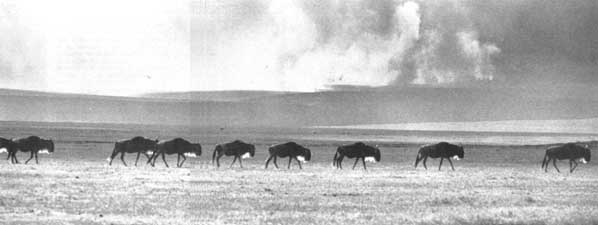
Wildebeest (above) are more disease-resistant and more fecund than cattle.
Eland (left) also thrive on arid land unsuitable for cattle and have been successfully ranched alone or with cattle in Kenya, Rhodesia, South Africa, Tanzania and Zambia.
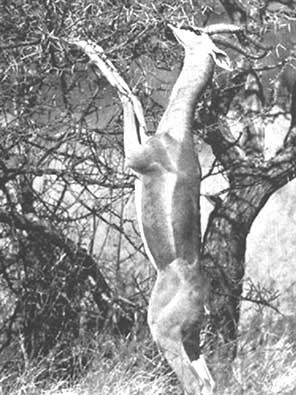
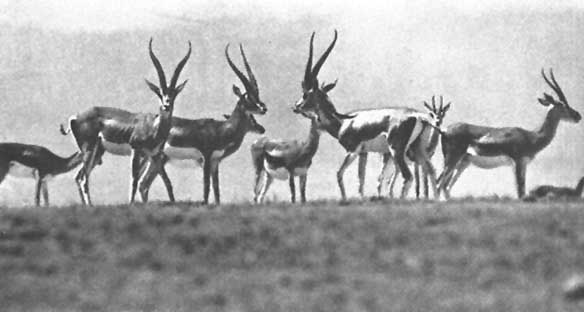
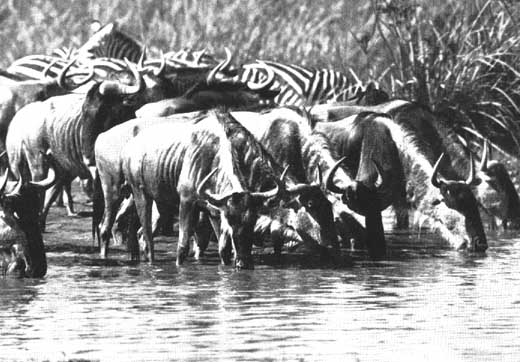
The Gerenuk or Waller's gazelle (right) is at home in the desert; normally it does not drink at all, taking its moisture from dry-looking vegetation.
Grant's gazelle (left) is bigger than Thomson's gazelle (right) and gives a higher percentage of meat when dressed, about 63 % compared to 57%. The Thomson's gazelle, however, has been managed experimentally in Kenya as a semi-domesticated animal.
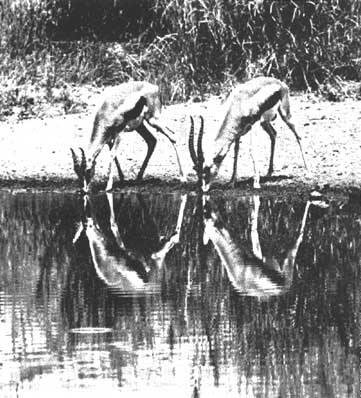
Wildebeest (below left) weigh an average 240 kg for males and 190 kg for females, of which 56% is meat after dressing.
Hippopotamus and buffalo (below right) are among the heavy-weights. Mean weight for hippos: 2 500 kg for males and 2 100 for females. In addition to meat and lard, their hide is valuable for leather. Buffaloes-average males 750 kg, females 600 kg-have good quality meat and can be as docile when domesticated as they are irascible when wild.
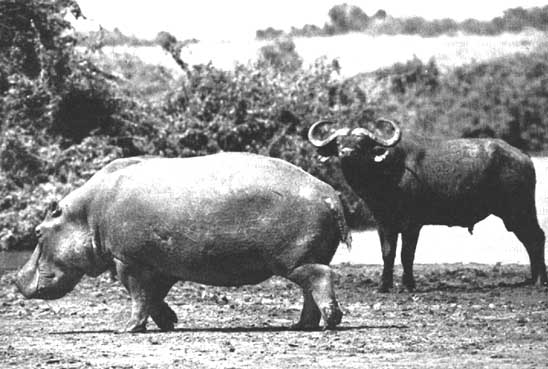
Eland, buffalo and hippopotamus range across Africa south of the Sahara. Wildebeest are found in eastern and southern Africa and Thomson's, Grant's and Waller's gazelles live in eastern Africa. None of these animals are becoming extinct and management practices have been developed for all of them.